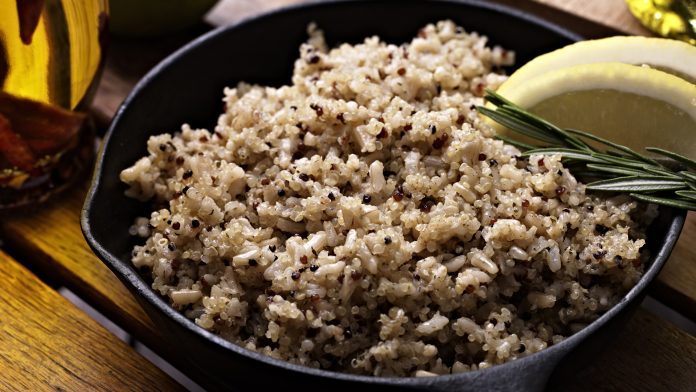
A study by Universitat Oberta de Catalunya (UOC) suggests that regularly eating quinoa can help type 2 diabetes prevention.
The World Health Organization (WHO) estimates that one in ten people will develop type 1 diabetes annually, causing 1.9 million deaths in 2019 alone and is becoming increasingly prevalent. The condition is preceded by a state known as prediabetes, a period in which the disease can be averted if action is taken. This means that effective type 2 diabetes prevention methods, such as dietary interventions, could change the lives of millions globally.
Diana Díaz Rizzolo, the study’s leader from the UOC, commented: “70% of people with prediabetes will develop the disease. This conversion rate is even higher among older adults, which means that prediabetes plus ageing equals a tremendous increase in the risk of developing the disease. This is why we wanted to see whether quinoa could be used to prevent the onset of the disease in this group.”
What is quinoa?
Quinoa is a pseudocereal that originates from the Andes with extremely high nutritional value. Quinoa is highly rich in B vitamins and vitamins E and C, in addition to minerals such as calcium, iron, and magnesium. Quinoa is also an excellent source of complex carbohydrates and fibre, containing high levels of proteins with all essential amino acids.
Earlier studies in mice identified that a micronutrient in quinoa called polyphenols could lower blood sugar levels, which is essential for type 2 diabetes patients as they experience blood sugar spikes after eating carbohydrate-rich foods due to their body producing enough insulin.
Researchers theorised that these equalities could positively impact type 2 diabetes prevention and cardiovascular diseases, but there were no studies to reinforce these claims.
“We carried out a review to find out what the scientific literature had to say about all the benefits attributed to quinoa, and we found that there was no previous scientific evidence, only hypotheses and that all the studies conducted in the past only focused on specific components or nutrients, without taking into account the food as a whole,” said Díaz Rizzolo.
Enhancing type 2 diabetes prevention
The researchers designed a study to analyse if replacing carbohydrate-rich foods that increase blood glucose levels with quinoa and foods made from this pseudocereal could aid in type 2 diabetes prevention.
The team recruited prediabetic people over 65, as age is also a risk factor for the disease. Over one month, the researchers monitored the participants by fitting them with a continuous glucose monitor that measures blood sugar levels throughout the day. The participants also recorded what they ate to see how their levels changed after each meal.
At the end of the month, the team replaced food high in complex carbohydrates, such as cereals, pulses, tubers and pasta, with quinoa and foods made from this pseudocereal. They collaborated with the Alícia Foundation, which prepared new products using quinoa flour similar to the foods the volunteers were already eating, such as bread, brioches, pasta, crackers and breadsticks. Once again, they measured the participant’s blood glucose levels.
Díaz Rizzolo said: “We compared the blood sugar patterns and found that when the participants had eaten quinoa, their blood sugar spike was lower than with their usual diet. This is crucial because these post-meal blood sugar spikes are a determining factor in the progression of type 2 diabetes.”
The team also discovered that eating quinoa helped control blood lipid levels, which could be essential for controlling high cholesterol and other factors associated with cardiac risk. Quinoa also contains high levels of betaine, which helps regulate homocysteine levels and prevent coronary heart disease.






















